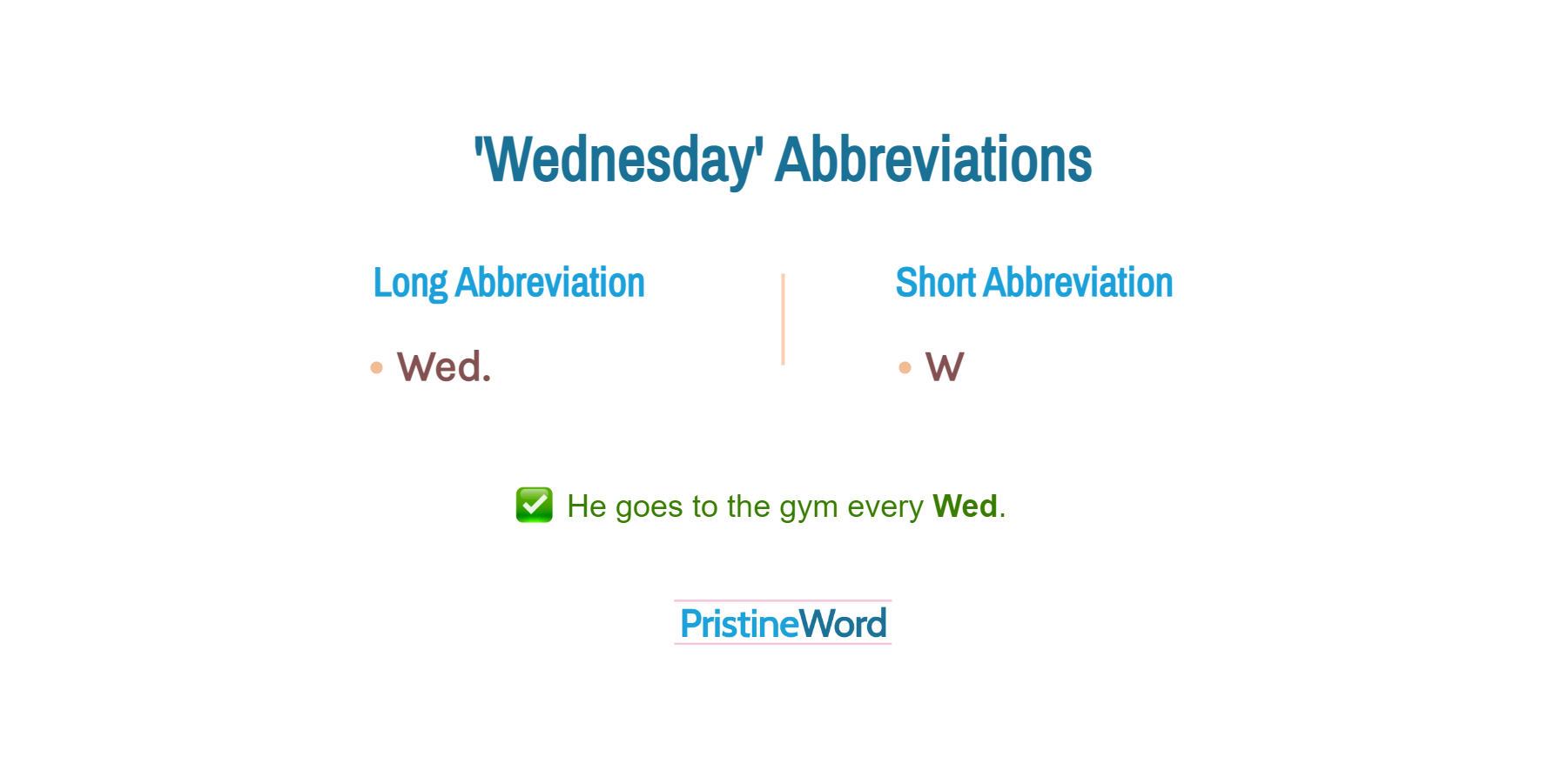There are two ways to abbreviate "Wednesday": Long abbreviation (Wed.) and Short abbreviation (W).
There are two common ways to abbreviate "Wednesday":
-
Long abbreviation (Wed.)
I'll be there on Wed.
-
Short abbreviation (W)
Meeting with the client on W
These abbreviations are quite common in American, British, and Australian English. However, use the shortest form only if space is limited, for example, to write quick notes or use illustrations, tables, or charts.
I'll be there this Wed.
Project status meeting on T
Ensure it is obvious to readers which day you are speaking about.
Open for business this W.
Open for business this Wed.
Why do we use a period after "Wed"? MLA style recommends using punctuation because the abbreviation ends in a lowercase letter. By contrast, if the abbreviation is composed exclusively of capital letters, such as W, omit the period.
Her birthday’s on a Wed./W this year.
It's worth noting here that we should always capitalize Wednesday, even if this word is abbreviated.
Sarah will be there this Wed.
Sarah will be there this wed.
Follow the same abbreviation strategy with the rest of the days of the week:

